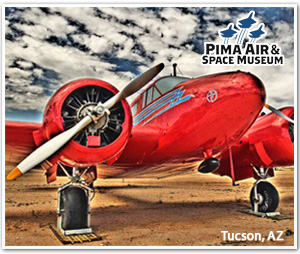Moving to Tucson, Arizona
The Old Pueblo is one of America’s most culturally-rich cities. Tucson bleeds Southwestern charm like its skies bleed vibrant rainbows and its residents bleed U of A red and blue. The city has an old west feel. Many of its residences are old adobe buildings shrouded in cacti, and the city takes pride in things like the rodeo and tamales.
However, Tucson is a very modern city, too. Its downtown area is filled with trendy bars, excellent restaurants and music. In fact, the iconic Club Congress has all of those things at once! And Tucson’s northern foothills house many high-end boutiques, resorts and gorgeous homes.
Geography of Tucson, Arizona
Tucson is located in a hot, desert valley, surrounded by mountains on all sides, including Mount Lemmon, which is snow-capped in the winter, the Santa Catalinas to the East, and the western foothills, which give way to a valley of hundreds of thousands of saguaro cacti – Saguaro National Park. The Santa Rita River used to run through the city, but it has since dried up, leaving the valley water-less. Nevertheless, the area is densely vegetated by cacti and brush, far more so than nearby Phoenix.
Tucson is about sixty miles from the U.S.-Mexico border. The Tucson metro, which includes northern satellite, Marana, and the bordertown, Nogales, is home to roughly 1 million people. The University of Arizona is located in the center of the city and contributes roughly 50,000 people to the population. From there, the city slopes up foothills to the north toward high-end neigborhoods, which house many of Tucson’s families.
Positives of Living in Tucson
Weather – Tucson is sunny over 300 days a year, and from October until May, its weather approaches warm, sunny perfection. Even in hotter months, the nights are cool enough to enjoying a patio in shorts and sandals, and in the hot peak of summer, the monsoon comes in a few times of week, bringing rain, cooler temperatures and rainbows.
Nature – The nearby mountains offer striking views, trees and even skiing, but they valley can be just as enjoyable, with forests of saguaros, the classic, Wil-E-Coyote cactus which actually only exists in Tucson, Phoenix and parts of northern Mexico. Nowhere are the cacti more prevalent than in Saguaro National Park, which is only twelve miles from Tucson. Residents enjoy great biking, hiking, golfing and camping opportunities year ’round.
Gem Show – Tucson’s gem show is the largest in the U.S. For about a month, people from all over the world congregate to sell everything from art and necklaces to rare jewels.
Cost of Living – Tucson, like most of the southwest, offers fairly inexpensive rents, and gas is the cheapest in the nation.
University of Arizona – UA has a vibrant, palm-tree-laden campus in the middle of the city, and it supports a number of attractions nearby, including 4th Avenue, a street filled with art, restaurants and bars, and nearby downtown Tucson.
Southwest Charm – Tucson is the Southwest. There is a city-wide holiday and parade for the annual rodeo; the culture is heavily influenced by nearby Mexico, from its 100-year-old adobe homes to its Mexican-heavy cuisine; and the Wild West vibe still rides on desert ranches and in nearby Tombstone and Native American towns.
Negatives of Living in Tucson
Economy – Tucson’s economy depends heavily on the military and the city’s largest employer: Raytheon, which residents know as the place where missiles are made. The city has some copper production, but it largely lacks the industrial drivers many cities are built on, like a vital port or a logging/mining/farming industry.
Summer – Summer in Tucson tops 105 on a daily basis. The only saving grace is the occasional monsoon (which roll in around 5 pm) and the knowledge that in nearby Phoenix it’s even hotter.
Driving – In a maddening display of poor foresight, Tucson was built without a major highway. Yes, the I-10 passes along the edge of the city, but it’s out-of-the-way for most residents, who have no choice but to drive on busy streets, light after light.
Crime – The drug cartels in Mexico don’t present a major threat to Tucson, and it’s rare to hear of violence caused by them; however, Mexico does influence theft crimes in the city. Bikes and cars are stolen all the time in Tucson. Many of those cars are used to transport people from Mexico into the U.S., after which they are dumped in the desert. Bikes (biking culture is big in Tucson) are stolen and used as income for gangs, much like drugs.
Want to move to Tucson? Check out some Tucson moving companies right here: Tucson movers.



